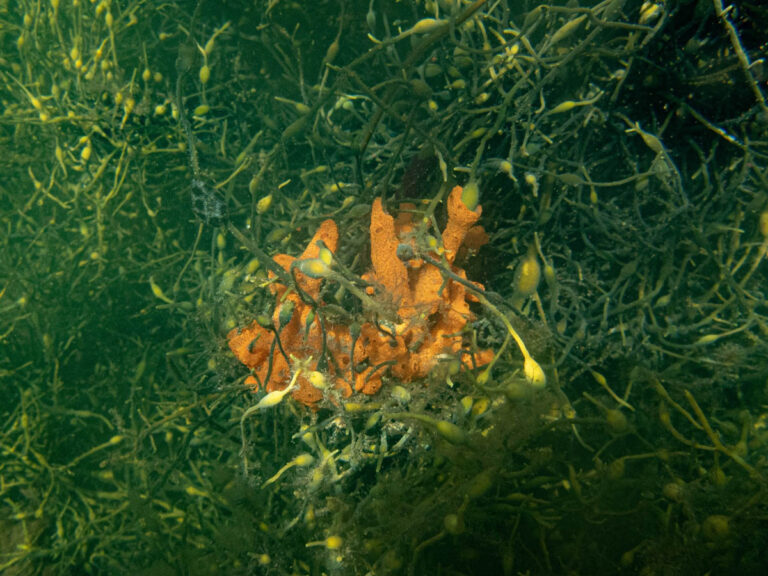Violet tunicate is an invasive colonial tunicate native to the northwestern Pacific Ocean (Asia).
The violet tunicate was initially discovered in eastern Canada in the 1990s along the Atlantic coast of Nova Scotia; in 2002, it was discovered in the Gulf of St. Lawrence; and in 2009, it was discovered along the Bay of Fundy shore in New Brunswick. It is found extensively along the coast of Prince Edward Island in the southern Gulf of St. Lawrence, and it is also beginning to occur on the Gulf Shores of Nova Scotia and southeast New Brunswick. It was initially discovered in Belleoram, Newfoundland and Labrador, in 2007. As of 2010, it remained contained within Belleoram’s borders.
This colonial species is widely spread in British Columbia; reports have been made from Haida Gwaii, the North Coast, the West Coast of Vancouver Island, and the Strait of Georgia.
Scientific Investigation
In order to better understand how the Violet Tunicate population responds to and adapts to Canadian environments, Fisheries and Oceans Canada is doing research on this population.
Managing Overabundance
The movement of shellfish, fishing gear, and commercial and recreational vessels can all spread turicates. Boat hulls and fishing gear should be visually inspected and cleaned as needed to stop the spread of violet tunicates. Boats should have their water emptied and let to dry for 24 hours to stop the spread of live particles. Violet tunicate should also be kept away from wharves and nearby structures since it can quickly colonize and create sizable, self-sustaining populations.
“The Violet Tunicate is a colonial tunicate, usually made of single colour colony (purple, pink, yellow, white, or orange). Violet tunicate is a filter feeder, getting nutrients from phytoplankton (algae), bacteria and other small organic things that float in the sea. In large numbers, the tunicate competes for food with other filter feeders, such as mussels and scallops.
Violet tunicate is mostly composed of water. It grows rapidly compared to other marine organisms. It may cover surrounding plants and animals and deprive them of sunlight or food. Violet tunicate may even suffocate smaller organisms, such as juvenile mollusks. It releases a chemical that can make it hard for other organisms to attach properly to surfaces. These organisms then become vulnerable to being removed by water currents. This chemical can also repel and inhibit growth in predators. All of this makes the violet tunicate harmful to shellfish harvesters, aquaculture farmers, and aquatic organisms that live on the bottom of the ocean.”
Courtesy Patricia Lockhart
If you think you’ve discovered an aquatic invasive species:
- Take photos
- Note:
- the exact location (GPS coordinates)
- the observation date
- identifying features
- Contact us to report it








